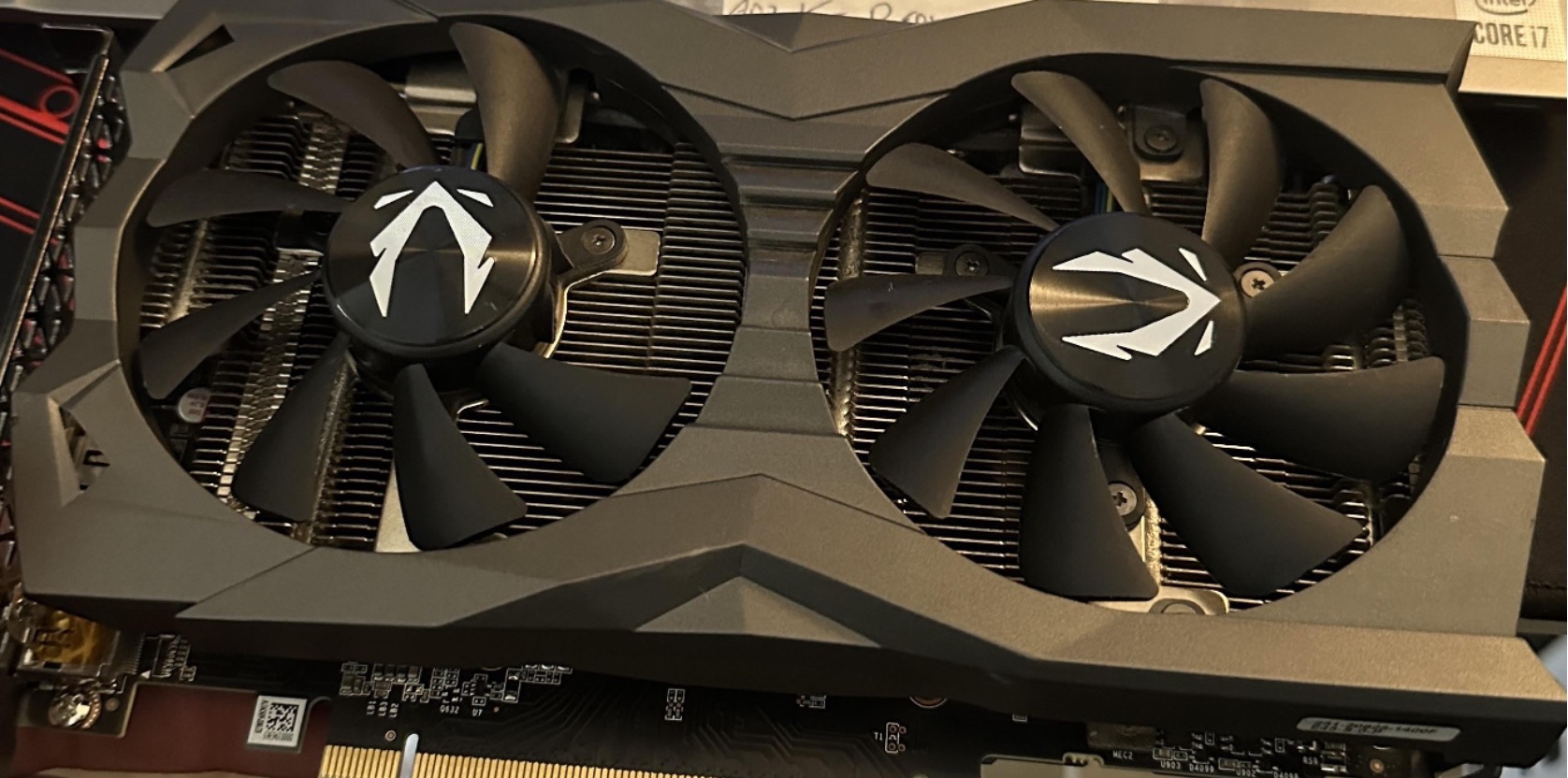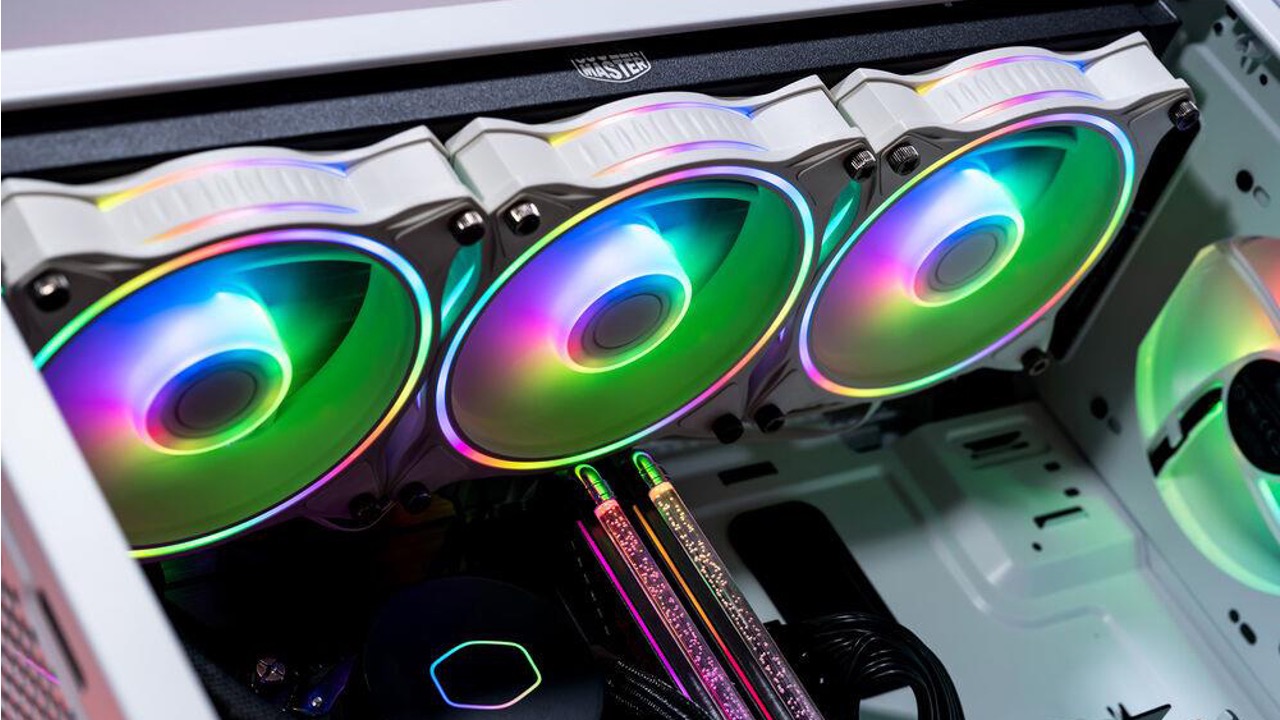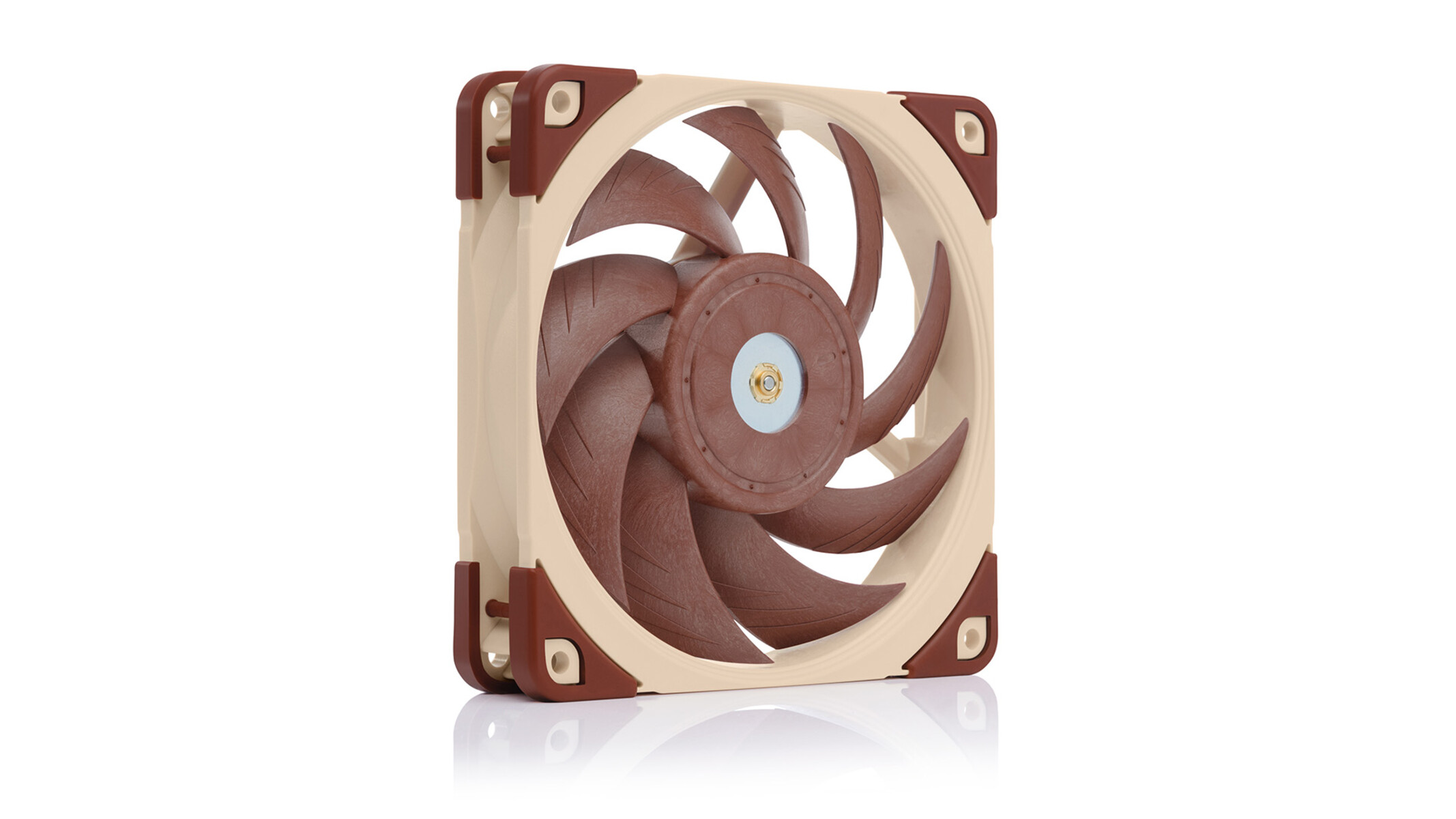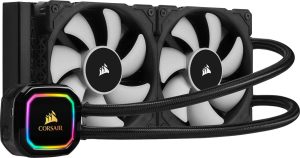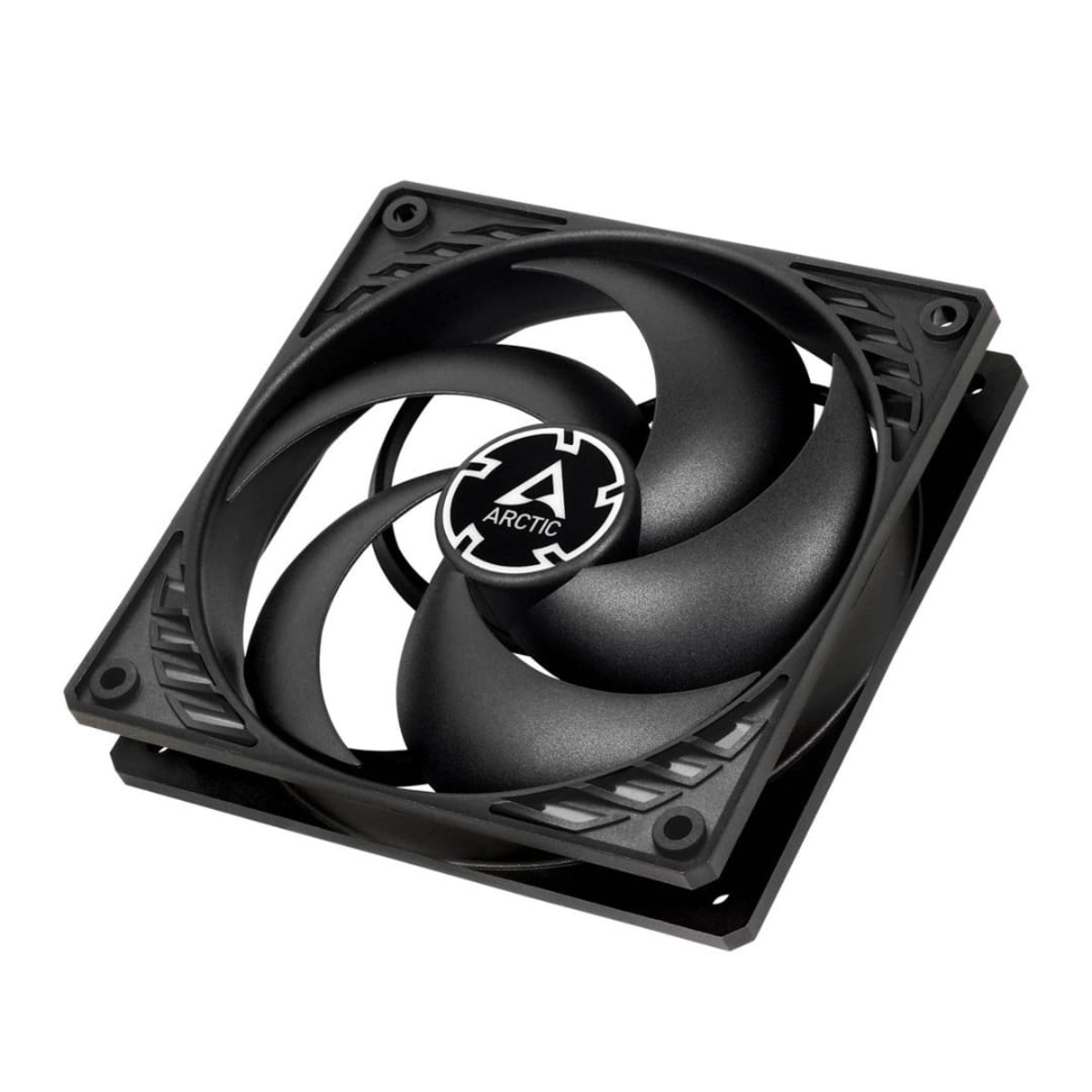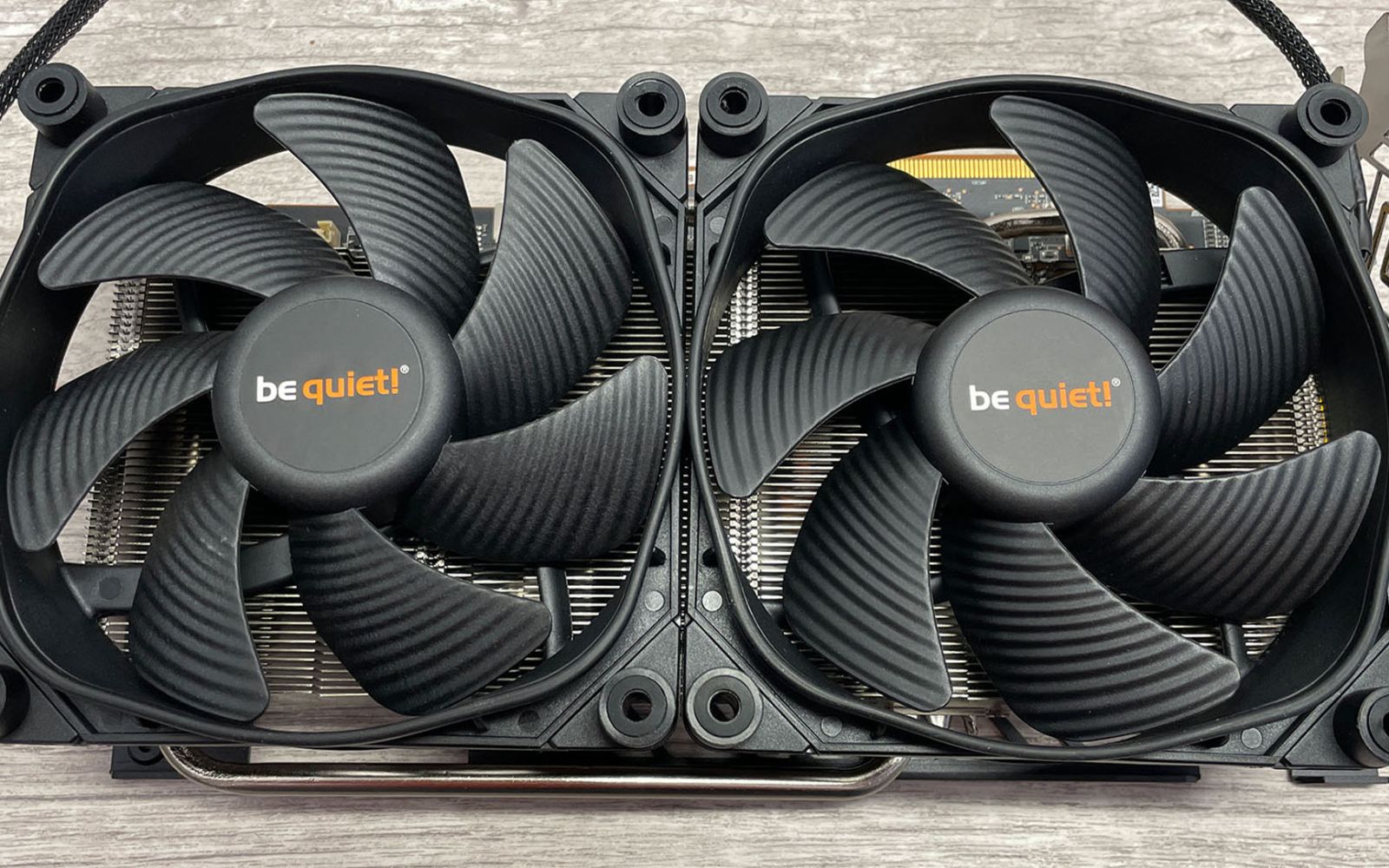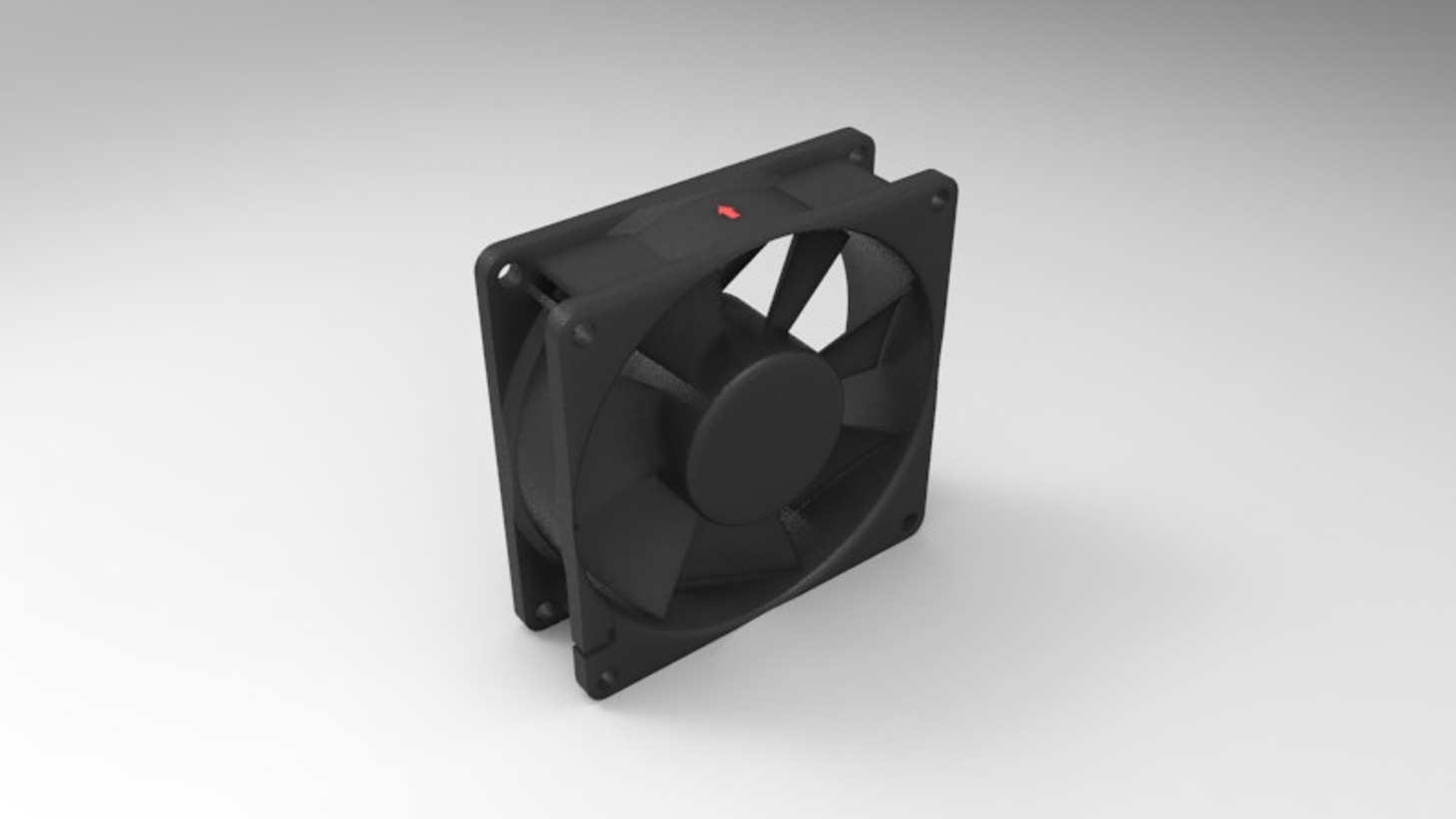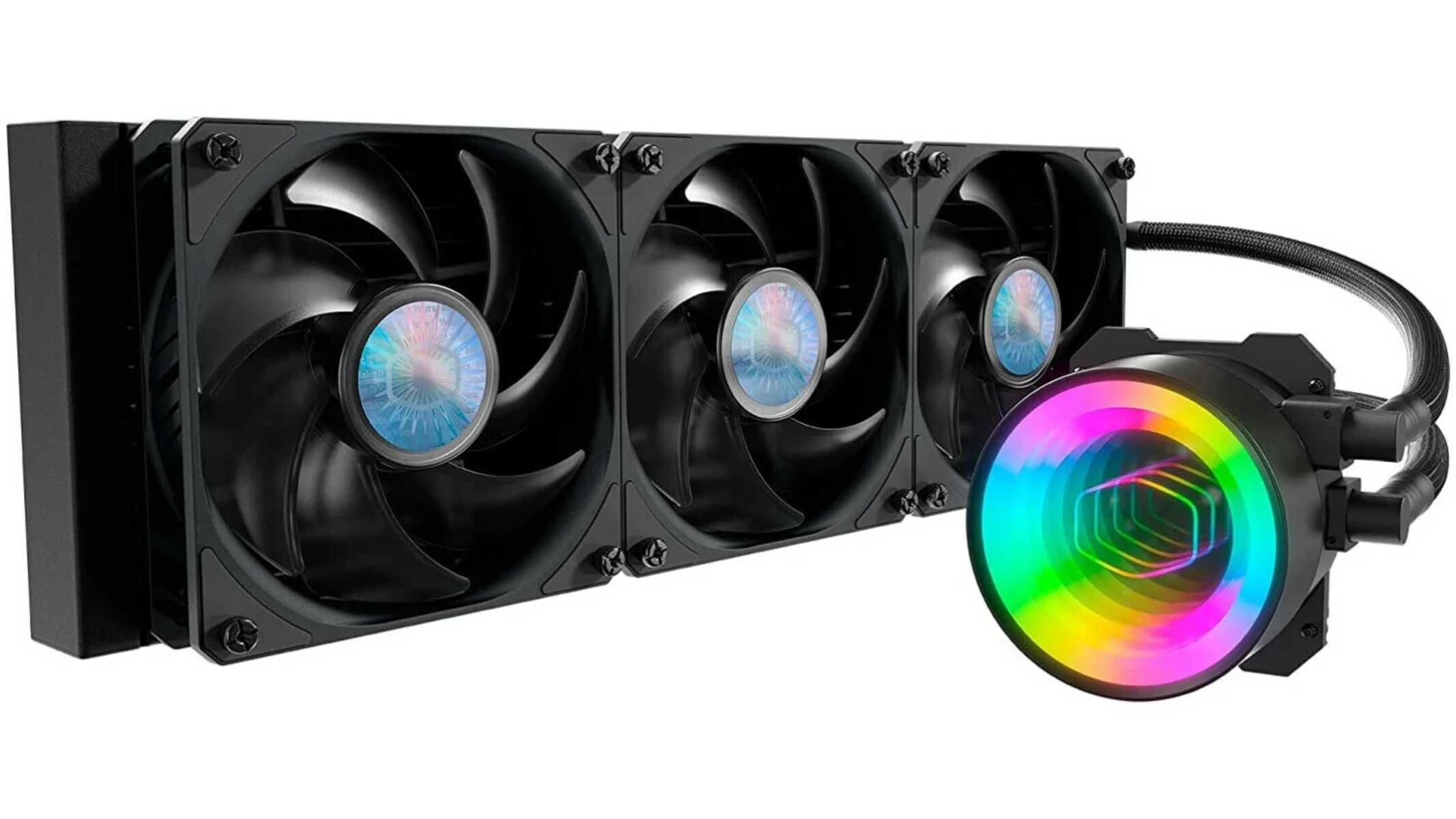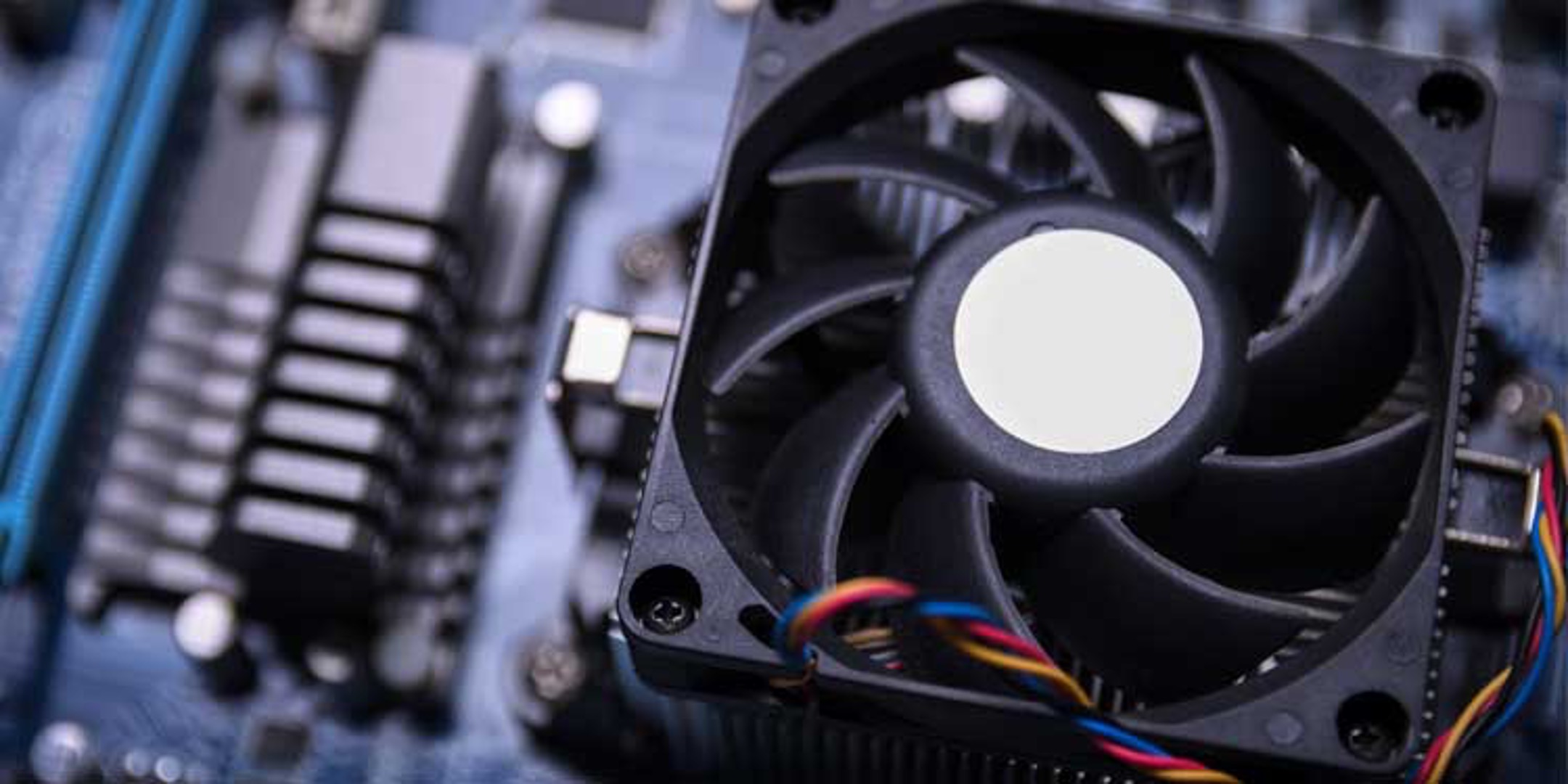Introduction
A case fan, also known as a computer fan, plays a crucial role in cooling down the internal components of a computer system. It circulates air within the computer case, preventing overheating and ensuring optimal performance and longevity of the hardware. However, sometimes, case fans can encounter issues, such as blade breakage, which can impact the cooling efficiency and overall functionality of the system.
Blade breakage in a case fan can occur due to several factors, including overheating, physical damage, fan misalignment, poor quality blades, and excessive dust buildup. Understanding these common reasons for blade breakage is essential for taking necessary preventive measures and maintaining the smooth operation of your computer system.
In this article, we will explore the various reasons why case fan blades may break and provide valuable tips on how to prevent such issues. By properly maintaining and caring for your case fan, you can ensure its longevity and prevent unforeseen interruptions in your computer’s performance.
Before delving into the specific causes and prevention methods, let us first gain a better understanding of what exactly a case fan is and how it functions.
What is a Case Fan?
A case fan is a vital component of a computer system that helps to regulate its temperature by cooling down the internal components. It is typically installed inside the computer case and is designed to circulate air, ensuring that the hardware stays within safe operating temperatures.
Case fans are equipped with fan blades that rotate when powered on, creating airflow to dissipate the heat produced by the computer’s components, such as the CPU, GPU, and power supply. By effectively removing hot air and bringing in cooler air, case fans prevent overheating, which can lead to performance degradation, system instability, and in extreme cases, permanent damage to the components.
There are different types of case fans available, including 80mm, 120mm, and 140mm fans, with varying airflow and noise levels. Some case fans also come with additional features like LED lighting or adjustable fan speeds. The size and number of case fans required for a computer system depend on factors such as the computer’s configuration, the level of heat generated by the components, and the desired level of cooling.
Case fans are typically connected to the motherboard or a fan controller using cables, and their speed can be adjusted either through the computer’s BIOS or with specialized software. This allows users to customize the fan speed based on their specific cooling needs, striking a balance between noise levels and cooling efficiency.
Overall, case fans are an integral part of any computer system, helping to regulate temperature and maintain optimal performance. However, like any mechanical component, case fans are susceptible to issues, including blade breakage. Understanding the common reasons for such issues can help users take preventive measures to avoid fan blade breakage and ensure the smooth functioning of their computer system.
Common Reasons for Blade Breakage
Blade breakage in case fans can occur due to several factors. While case fans are designed to be durable, certain circumstances can lead to their blades breaking, affecting the cooling performance of the system. Here are some common reasons for blade breakage:
- Overheating: Excessive heat can weaken the materials of the fan blades, causing them to become brittle and prone to breaking. When a case fan operates under high temperatures for extended periods, it puts additional stress on the blades, increasing the risk of breakage.
- Physical Damage: Accidental knocks or drops can cause physical damage to the case fan and potentially result in broken blades. Mishandling or improper installation of the fan can lead to stress on the blades, making them more susceptible to breakage.
- Fan Misalignment: A case fan that is not properly aligned or mounted can experience imbalanced operation, causing stress on the blades. Over time, this can lead to blade breakage as they struggle to maintain a stable rotation.
- Poor Quality Blades: Inferior quality or cheaply made case fans may have weaker blades that are more prone to breakage. These fans often lack the durability and strength necessary to withstand continuous use and can break easily under normal operating conditions.
- Excessive Dust Buildup: Dust accumulation on fan blades can cause them to become unbalanced or hinder their rotation. This imbalance can lead to increased stress on the blades, eventually resulting in breakage.
It’s worth noting that while these reasons are common, they are not the only causes of blade breakage. Other factors, such as manufacturing defects or prolonged use, can also contribute to this issue. To prevent blade breakage and ensure the longevity of your case fan, implementing proper maintenance and preventive measures is crucial. In the next section, we will discuss how to prevent blade breakage and keep your case fan running smoothly.
Overheating
Overheating is a common cause of blade breakage in case fans. When a computer system operates under high temperatures for extended periods, the excessive heat can weaken the materials of the fan blades, making them more susceptible to breaking. Here are some factors that contribute to overheating and increase the risk of blade breakage:
- Inadequate Cooling: If a computer system does not have sufficient cooling mechanisms in place, such as an insufficient number of case fans or a lack of proper ventilation, it can lead to higher internal temperatures. This puts additional stress on the case fan and its blades, increasing the likelihood of breakage.
- Overclocking: Overclocking is the process of increasing the clock speed of a component, such as the CPU or GPU, to achieve higher performance. However, overclocking generates more heat, and if the cooling system is not efficient enough to handle the increased heat output, it can lead to overheating and potential blade breakage.
- Dust Buildup: Dust accumulation on case fans and their blades can restrict airflow and lead to reduced cooling performance. Restricted airflow causes the fan to work harder to maintain a steady airflow, resulting in increased stress on the blades. Over time, this can lead to blade breakage.
- Faulty Thermal Management: Malfunctioning or inadequate thermal management systems, such as faulty heat sinks or improperly applied thermal paste, can prevent efficient heat dissipation. This can cause the internal temperature to rise, putting strain on the case fan and increasing the risk of blade breakage.
To prevent overheating and reduce the risk of blade breakage, it’s important to maintain proper cooling within the computer system. This involves ensuring adequate airflow, keeping the system clean from dust, and monitoring temperatures regularly. By addressing these factors, you can help prolong the life of your case fan and maintain optimal cooling performance.
Physical Damage
Physical damage is another common reason for blade breakage in case fans. Accidental knocks, drops, or mishandling can cause significant damage to the fan, ultimately resulting in broken blades. Here are a few factors that contribute to physical damage:
- Improper Installation: Incorrectly installing a case fan or applying excessive force during installation can lead to physical damage. Tightening screws too forcefully or not aligning the fan properly can put undue stress on the blades, making them more prone to breakage.
- Mishandling: Rough handling of computer systems, such as moving them without proper precautions or transporting them without securing the case fan, can cause the fan blades to collide with other components or surfaces. These impacts can lead to immediate breakage or weaken the blades over time.
- Component Interference: In some cases, the placement of other components within the computer system can interfere with the fan blades’ rotation. For example, if a cable or another component obstructs the path of the fan blades, it can cause them to come into contact and potentially break.
To prevent physical damage and subsequent blade breakage, proper handling and installation of case fans are essential. When installing or moving your computer system, be gentle and take care to avoid unnecessary impacts or collisions. Ensure that there is ample space around the fan blades for free rotation and that no other components obstruct their path.
If you notice any signs of physical damage, such as bent or cracked blades, it’s important to address the issue promptly. Continuing to use a damaged fan can result in further damage or inefficiency in cooling. In such cases, it may be necessary to replace the fan to maintain optimal cooling performance and prevent any potential risks associated with broken blades.
Fan Misalignment
Fan misalignment is a common issue that can lead to blade breakage in case fans. When a fan is not properly aligned or mounted, it can cause imbalanced operation and put stress on the blades. Over time, this increased stress can result in blade breakage. Here are a few factors that contribute to fan misalignment:
- Improper Installation: If a case fan is not installed correctly, it may not be aligned properly with the mounting points or the airflow direction. This misalignment can cause the blades to hit other components or fan grills, leading to damage and potential breakage.
- Loose Mounting: If the screws or fasteners used to secure the case fan are not tightened properly, it can result in fan misalignment. Loose mounting allows the fan to vibrate or move during operation, which can strain the blades and increase the risk of breakage.
- Warping or Bent Structure: In some cases, the structure of the case fan itself may be warped or bent, causing misalignment. This can occur due to manufacturing defects or physical damage, making it difficult for the blades to rotate smoothly without interference.
To prevent fan misalignment and subsequent blade breakage, it is important to ensure proper installation and alignment of case fans. When installing a fan, follow the manufacturer’s instructions precisely and carefully tighten the mounting screws or fasteners. Double-check that the fan is securely and evenly fastened, without any wobbling or movement.
If you suspect fan misalignment, visually inspect the fan and its surrounding components for any signs of interference or contact. Adjust the fan position, if necessary, to ensure adequate clearance for the blades to rotate freely. By addressing misalignment issues promptly, you can reduce the strain on the blades and prevent blade breakage.
Poor Quality Blades
The quality of the blades in a case fan plays a significant role in its overall durability and resistance to breakage. Poor quality blades are more susceptible to damage and can break easily under normal operating conditions. Here are a few reasons why poor quality blades can contribute to blade breakage:
- Weaker Materials: Inferior quality blades are often made from weaker materials that lack the necessary strength and durability. These materials may not be able to withstand continuous use or the stresses placed on them during operation, increasing the risk of breakage.
- Lack of Reinforcement: Some low-quality case fans may lack proper reinforcement techniques on their blades, such as reinforcement ribs or supports. Without these reinforcements, the blades can flex excessively or become structurally weak, making them more prone to breakage.
- Manufacturing Defects: Poor quality control during the manufacturing process can lead to defects in the blades. These defects can weaken the blades, making them more susceptible to breakage. Common defects include irregularities in shape, uneven thickness, or stress points.
To avoid blade breakage due to poor quality blades, it is important to invest in case fans from reputable brands that prioritize quality and durability. Look for fans that are made from high-quality materials and have a proven track record of reliability. Reading customer reviews and checking for certifications or industry standards can help you gauge the quality of the fan blades.
While high-quality case fans may come at a higher price, they provide better longevity and performance, reducing the risk of blade breakage. Investing in a reliable brand can save you the hassle and cost of replacing broken fans and potentially prevent any additional damage to your computer system caused by poor quality blades.
Excessive Dust Buildup
Excessive dust buildup on case fans can lead to blade breakage and reduced cooling efficiency. When dust accumulates on the fan blades, it can imbalance their rotation or hinder their movement, putting extra strain on the blades and increasing the risk of breakage. Here are a few reasons why excessive dust buildup can contribute to blade breakage:
- Reduced Airflow: Dust acts as an insulator, inhibiting the airflow and trapping heat around the fan blades. This buildup reduces the cooling performance of the fan, causing it to work harder to maintain proper airflow. The increased strain on the blades can lead to breakage over time.
- Fan Inefficiency: When a case fan is clogged with dust, it may not be able to rotate at its intended speed or generate enough airflow to cool the system effectively. This inefficiency puts additional stress on the blades as they struggle to move through the dense layer of dust, making them more susceptible to breakage.
- Abrasive Particles: Dust particles can contain abrasives, such as small bits of dirt or debris, that can cause damage to the fan blades. As the blades rotate, these particles can scratch or chip the surface of the blades, weakening them over time and leading to breakage.
To prevent excessive dust buildup and reduce the risk of blade breakage, regular cleaning of case fans is crucial. Here are some tips to keep dust buildup under control:
- Regularly clean your computer system: Dust can accumulate not only on the fan blades but also on other components and surfaces within the computer case. Regularly clean your computer system using compressed air, a soft brush, or specialized computer cleaning tools to remove dust and debris.
- Use dust filters: Installing dust filters on your case fans can help prevent a significant amount of dust from entering the system in the first place. These filters can trap dust particles, making them easier to clean and reducing the amount of dust that settles on the fan blades.
- Maintain a clean environment: Try to keep your computer system in a clean environment with minimal dust accumulation. Avoid placing it on the floor or in areas where dust is more prevalent, such as near windows or carpets.
By implementing regular cleaning practices and maintaining a clean environment, you can reduce excessive dust buildup on your case fans, prolong their lifespan, and minimize the risk of blade breakage.
How to Prevent Blade Breakage
To ensure the longevity and optimal performance of your case fan, taking preventive measures to avoid blade breakage is essential. By implementing the following practices, you can minimize the risks associated with blade breakage and maintain the cooling efficiency of your computer system:
- Proper Maintenance: Regularly inspect your case fan for any signs of damage or wear. Check for loose screws or fasteners and ensure that the fan is securely mounted. Address any issues promptly to prevent further damage.
- Regular Cleaning: Periodically clean your case fan and the surrounding components to prevent excessive dust accumulation. Use compressed air, a soft brush, or specialized computer cleaning tools to remove dust and debris from the fan blades and other surfaces.
- Avoiding Physical Impact: Handle your computer system with care, especially when moving or transporting it. Avoid unnecessary impacts or knocks that can cause physical damage to the fan and its blades.
- Investing in Quality Brands: Choose case fans from reputable brands known for their quality and durability. High-quality fans are less likely to experience blade breakage and offer better longevity and performance.
- Monitoring Temperature Levels: Regularly check the temperature of your computer system using monitoring software or BIOS settings. Keeping the system within safe operating temperatures reduces the strain on the fan blades and minimizes the risk of breakage.
By following these preventive measures, you can significantly reduce the likelihood of blade breakage in your case fan. Taking care of your case fan not only ensures the efficient cooling of your computer system, but it also helps to protect the other hardware components from potential damage caused by overheating. Implementing proper maintenance and cleaning practices will contribute to the smooth and uninterrupted operation of your computer system in the long run.
Proper Maintenance
Implementing proper maintenance practices is crucial to prevent blade breakage in case fans and ensure their optimal performance and longevity. Regular maintenance not only helps in identifying any potential issues but also allows you to address them before they lead to blade breakage. Here are some key aspects of proper maintenance:
- Regular Inspections: Conduct routine inspections of your case fan to check for any signs of damage or wear. Look out for loose screws or fasteners and ensure that the fan is securely and evenly mounted. Promptly address any issues to prevent further damage.
- Vibration and Noise Checks: Pay attention to any unusual vibrations or noises coming from the case fan. Excessive vibrations may indicate a misaligned or imbalanced fan, which can lead to blade breakage. Investigate the source of the vibration or noise and take appropriate action.
- Cleaning Schedule: Establish a regular cleaning schedule to remove dust and debris from the case fan and its surroundings. Dust buildup on the fan blades can affect their rotation and cooling performance, increasing the risk of blade breakage. Use compressed air, a soft brush, or specialized computer cleaning tools to safely clean the fan blades and other components.
- Secure Mounting: Ensure that the case fan is securely and properly mounted within the computer case. Loose mounting can lead to excessive vibration and strain on the fan blades, making them more susceptible to breakage. Double-check the tightness of screws or fasteners to ensure a secure fit.
- Monitoring Performance: Regularly monitor the performance of your case fan to ensure it is functioning optimally. Keep an eye on speed, airflow, and temperature levels. Any significant deviations from normal operation may indicate potential issues that need attention.
By incorporating proper maintenance practices into your computer system’s care routine, you can identify and address any potential blade breakage risks in a timely manner. Regular inspections, cleaning, and performance monitoring will help keep your case fan operating smoothly and reduce the possibility of unexpected interruptions or damage.
Regular Cleaning
Regular cleaning is a vital part of preventing blade breakage in case fans. Dust and debris can accumulate on the fan blades over time, hindering their rotation and potentially causing strain that leads to breakage. Implementing a regular cleaning schedule helps maintain optimal cooling performance and extends the lifespan of the case fan. Here are some essential points to consider for regular cleaning:
- Cleaning Frequency: Establish a cleaning schedule based on the environment in which your computer system operates. Factors such as dust levels, pet hair, and other debris in the air may require more frequent cleaning. As a general guideline, aim to clean the case fan every three to six months, or more frequently if necessary.
- Safe Cleaning Techniques: Use appropriate tools and techniques to clean the case fan without causing damage. Compressed air is a popular choice for dislodging dust from the fan blades. Ensure the computer system is turned off and unplugged before cleaning, and use gentle, controlled bursts of air to prevent undue stress on the blades.
- Comprehensive Cleaning: When cleaning the case fan, remember to clean both the blades and the surrounding areas. Dust can accumulate on other components, such as heat sinks and grills, which can obstruct airflow and impact the efficiency of the fan. Take the time to clean these areas as well to ensure proper cooling.
- Careful Handling: Handle the case fan with care during the cleaning process. Avoid applying excessive pressure on the blades, as they can be delicate and prone to damage. If necessary, use a soft brush to gently remove any stubborn dust without putting unnecessary stress on the blades.
- Consider Dust Filters: Installing dust filters on your computer system’s intake fans can help reduce the amount of dust that enters the case. These filters help to trap dust before it reaches the fan, making cleaning and maintenance easier. Regularly clean and replace these filters as part of your cleaning routine.
Regular cleaning not only prevents excessive dust buildup that can lead to blade breakage but also optimizes the cooling performance of the case fan. It is an essential step in the maintenance of your computer system and should be part of your regular maintenance routine to ensure the smooth operation and longevity of the case fan.
Avoiding Physical Impact
Avoiding physical impact is crucial to prevent blade breakage in case fans. Accidental knocks, drops, or mishandling of the computer system can cause significant damage to the fan and its blades. By taking precautionary measures and handling the system with care, you can minimize the risk of blade breakage. Here are some important points to consider for avoiding physical impact:
- Proper Handling: When moving or transporting your computer system, handle it with caution. Use both hands to support the system and avoid any sudden jerks or movements that can cause unnecessary impacts. If possible, remove the case fan or secure it to prevent it from being damaged during transportation.
- Safe Installation: When installing or replacing components, including case fans, ensure that you follow proper installation procedures. Read the manufacturer’s instructions carefully and avoid applying excessive force or pressure. Improper installation can lead to physical damage to the fan and increase the risk of blade breakage.
- Avoid Overcrowding: Ensure that there is adequate space inside the computer case, particularly around the case fan. Overcrowding can lead to components coming into contact with the fan blades, causing damage. Organize cables and components in a way that allows for proper airflow and avoids any potential interference.
- Secure Mounting: Properly mount the case fan within the computer case using the appropriate screws or fasteners. Ensure that the fan is securely and evenly mounted to minimize any potential movement or vibrations during operation. Loose mounting can lead to physical impacts and increase the risk of blade breakage.
- Protection Against Accidental Contact: In addition to securing the case fan within the computer case, consider installing fan guards or grills. These protective accessories can help prevent accidental contact with the fan blades, reducing the risk of them being damaged or broken.
By taking proactive measures to avoid physical impact, you can significantly reduce the likelihood of blade breakage in your case fan. Treating your computer system with care and ensuring proper installation and handling will help maintain the integrity of the fan and its blades, ultimately prolonging its lifespan and ensuring efficient cooling performance.
Investing in Quality Brands
Investing in case fans from reputable and quality brands is essential to prevent blade breakage and ensure long-lasting performance. High-quality case fans are constructed with superior materials and undergo rigorous testing to ensure durability and reliability. By opting for trusted brands, you can minimize the risk of blade breakage and enhance the overall cooling efficiency of your computer system. Here are some reasons why investing in quality brands is crucial:
- Strong and Durable: Quality brands prioritize the use of strong and durable materials in the construction of their case fans. These materials can withstand continuous use and are less likely to break or warp under normal operating conditions.
- Superior Construction Techniques: Reputable brands employ advanced construction techniques to reinforce the structural integrity of the case fans. These techniques include reinforcement ribs, thicker fan blades, and other design elements that enhance strength and minimize vulnerabilities.
- Stringent Quality Control: Quality brands adhere to strict quality control standards throughout the manufacturing process. This ensures that each case fan undergoes thorough testing and inspection to identify and rectify any flaws or defects before they reach the market. As a result, you can expect higher reliability and fewer instances of blade breakage.
- Long-Term Performance: Case fans from quality brands are designed to provide consistent and reliable cooling performance over an extended period. They are engineered to operate efficiently, maintaining optimal airflow, and temperature regulation for your computer system.
- Improved Cooling Efficiency: Investing in quality brands often translates to higher airflow, better fan blade design, and quieter operation. These factors contribute to improved cooling efficiency, reducing the strain on the blades and minimizing the chances of breakage.
While quality brands may come at a higher price point compared to generic or lesser-known options, the investment is worthwhile in terms of improved performance, durability, and longevity. By choosing reputable brands, you can have peace of mind, knowing that your case fan is built to withstand the demands of continuous use and maintain reliable cooling performance for your computer system.
Monitoring Temperature Levels
Monitoring temperature levels is an important practice to prevent blade breakage in case fans. Excessive heat can subject the blades to additional stress, increasing the risk of breakage. By incorporating regular temperature monitoring into your computer system maintenance routine, you can identify and address potential overheating issues before they cause damage. Here are some reasons why monitoring temperature levels is crucial:
- Preventing Overheating: Monitoring temperature levels allows you to identify if your computer system is operating within safe temperature ranges. Excessive heat can weaken the materials of the fan blades, making them more susceptible to breakage. By addressing overheating issues and keeping temperatures in check, you can reduce the strain on the blades.
- Identifying Cooling System Inefficiencies: Monitoring temperatures helps to identify any potential inefficiencies in your cooling system. A significant rise in temperature could indicate a malfunctioning or inadequate cooling mechanism, such as a failing case fan or clogged air vents. Addressing these issues promptly will prevent undue stress on the blades and mitigate the risk of breakage.
- Adjusting Fan Speeds: Monitoring temperature levels allows you to adjust the fan speeds accordingly. Most computer systems come with built-in fan speed control options that allow you to regulate the cooling performance. By adjusting the fan speeds based on the temperature readings, you can ensure that the blades are operating at an optimal speed, minimizing unnecessary strain.
- Early Detection of Cooling System Issues: Monitoring temperature levels helps in detecting any abnormalities or sudden spikes in temperature promptly. This early detection can alert you to potential cooling system issues, such as a failing fan or inadequate ventilation, allowing you to take immediate action to prevent damage to the blades and other components.
- Preventing Overall System Damage: Overheating not only poses a risk to the case fan blades but can also cause damage to other hardware components within the computer system. By monitoring and maintaining safe temperature levels, you reduce the risk of overall system damage and prolong the lifespan of your computer system.
Regularly monitoring temperature levels is a proactive approach to prevent blade breakage in case fans. By keeping temperatures in check and addressing cooling system issues promptly, you can ensure the longevity and efficient operation of your case fan, minimizing the risk of breakage and maintaining the overall health of your computer system.
Conclusion
Blade breakage in case fans can hinder the cooling efficiency and overall functionality of computer systems. Understanding the common reasons for blade breakage, such as overheating, physical damage, fan misalignment, poor quality blades, and excessive dust buildup, is essential to prevent such issues. By implementing proper maintenance, regular cleaning, and avoiding physical impact, you can protect the fan blades and ensure their optimal performance.
Investing in high-quality case fans from reputable brands not only reduces the risk of blade breakage but also enhances cooling efficiency and longevity. Monitoring temperature levels plays a crucial role in identifying overheating issues and maintaining the health of the case fan and other computer components.
By incorporating these preventive measures, you can prolong the lifespan of your case fan, prevent unexpected interruptions in computer performance, and safeguard the overall health of your computer system. Prioritizing proper maintenance practices and investing in quality components are key steps towards ensuring the efficiency and reliability of your computer system’s cooling system.







